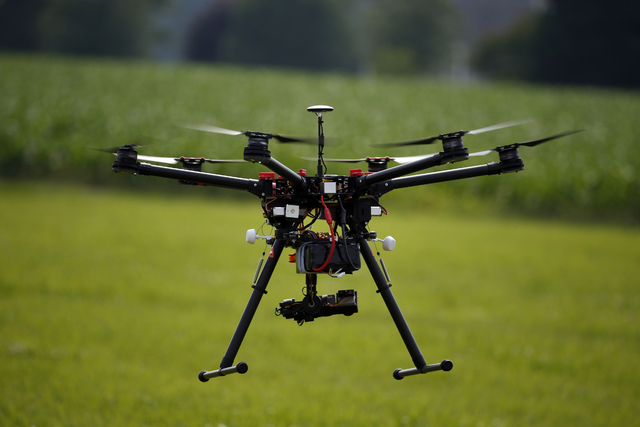Owners of all but the smallest toy drones will have to register them with the U.S. government before the end of the year if the Obama administration adopts proposals being issued by a task force it appointed. ADVERTISING Owners of
Owners of all but the smallest toy drones will have to register them with the U.S. government before the end of the year if the Obama administration adopts proposals being issued by a task force it appointed.
Registration — designed to make it easier for authorities to track down the growing numbers of illegal flights — should be free, easy to complete online and permit multiple devices on an owner’s filing, the task force is proposing, according to three people familiar with its recommendations who weren’t authorized to speak about it.
The recommendations will be delivered on Saturday, Federal Aviation Administration chief Michael Huerta said in a blog post Friday that didn’t disclose details.
Then comes the hard part: the Federal Aviation Administration must find a way to adapt them to existing laws that never contemplated widespread pilotless flights. And it will have to convince skeptics that the public will comply with the law — all in time to begin registration before the Christmas holiday sales rush.
“We have a very large number of unregistered drones out there and a very unsophisticated number of operators who have no idea what the FAA requirements are — or even what the FAA does,” said Kenneth Quinn, the former chief counsel at the agency who advises drone companies as a lawyer at Pillsbury Winthrop Shaw Pittman LLP in Washington. “To expect widespread compliance any time soon is highly unrealistic.”
Safety Incidents
Transportation Secretary Anthony Foxx called for drone registration last month to help stem growing cases of drones flying near airliners and other aircraft. The FAA has been receiving more than 100 reports a month of pilot sightings and other drone safety incidents.
Foxx and the FAA appointed the task force of 26 people representing drone manufacturers, retailers and aviation to recommend how registration would work. The FAA declined to comment beyond Huerta’s blog. The agency hopes to put rules in place before the end of the year, but may accept public input and alter the regulations later on, Huerta said.
The task force members, some of whom are still uneasy about elements of the compromise, agreed to include anything weighing more than 250 grams (9 ounces) in the registration program, according to the people who asked not to be named.
250 Grams
That’s less than one-quarter the weight of the Phantom 3, a model produced by SZ DJI Technology Co. Ltd., the China-based company that is the world’s largest drone manufacturer.
At the same time, the task force will recommend that online registration be as streamlined as possible. A drone owner should be able to register once for free and have it apply to multiple vehicles.
While those elements were viewed as critical to ensure that consumers would participate in registration, some of the proposals may run afoul of existing U.S. law.
The FAA believes that the law requires the agency to charge $5 to register an aircraft and there may be no way to exempt drone owners from the fee, according to one of the people familiar with the task force’s debate.
Daunting Challenge
Another daunting challenge is how the FAA will apply the complex set of existing aircraft registration rules, which govern everything from how to apply a plane’s identification number to the paper forms that must be used.
“If they can go mandate registration and marking, they still have the problem of having to go and change all the regulations down-line,” Terry Miller, owner and president of Transport Risk Management Inc., a Colorado aviation insurance company that has written thousands of policies on drones as well as traditional aircraft.
U.S. law requires that an aircraft owner attach a metal plaque to a plane so it can be identified after an accident, Miller said. Such plaques are impractical for light-weight drones, he said. The law also specifies that an application to register an aircraft be made on a paper form, not in the streamlined online application envisioned by the task force.
Instead of writing a new set of regulations for drone registration, the FAA is using the existing rules on the books governing all aircraft, the agency said in an explanation of the action on Oct. 22. If it relies on existing regulations, the agency may have to use its emergency powers to carve out exemptions for registering drones.
That process has made some participants uneasy as the agency attempts to apply its rules to this new class of flying devices.
“The FAA is going to have to explain to the public why it chooses to apply certain of the federal aviation regulations to model aircraft and not others,” said E. Tazewell Ellett, another former FAA chief counsel who is co-chair of Hogan Lovells’ drone practice.
To contact the reporter on this story: Alan Levin in Washington at alevin24bloomberg.net To contact the editors responsible for this story: Jon Morgan at jmorgan97bloomberg.net Elizabeth Wasserman



